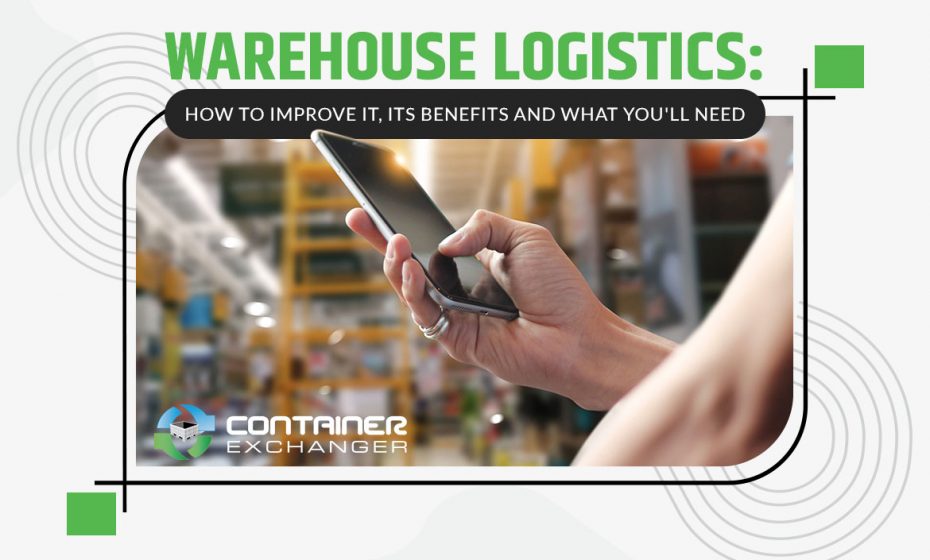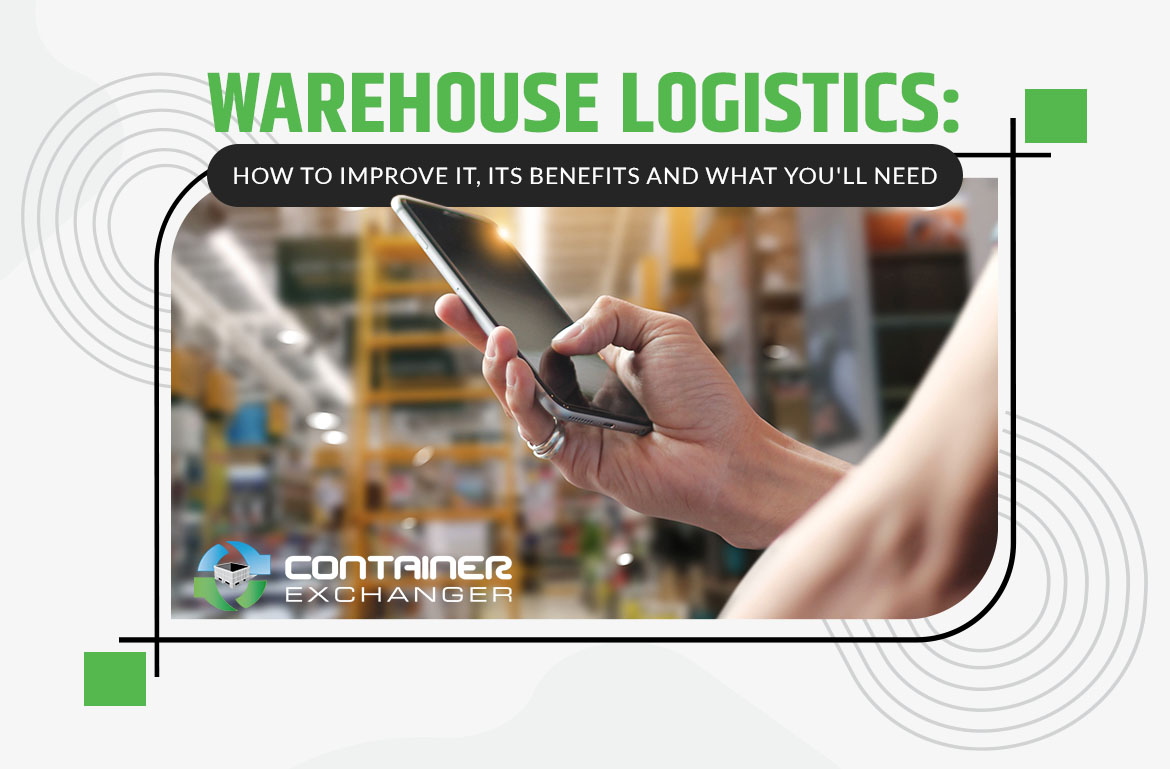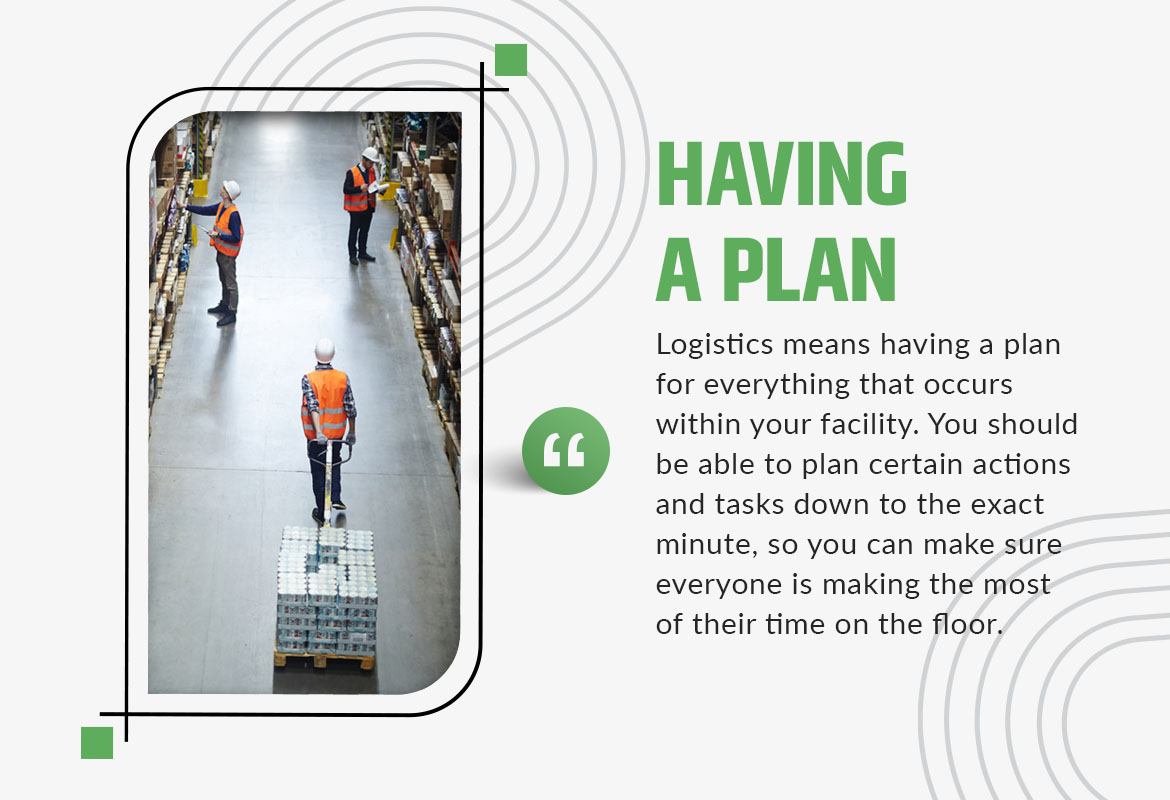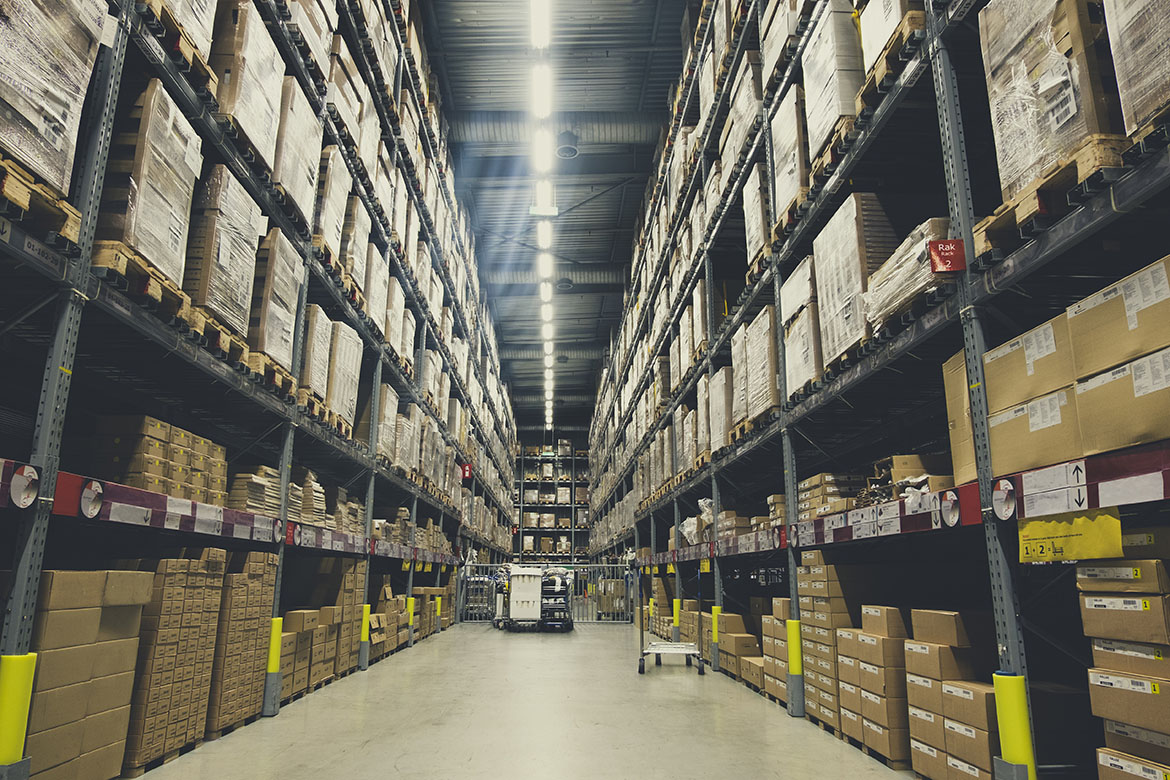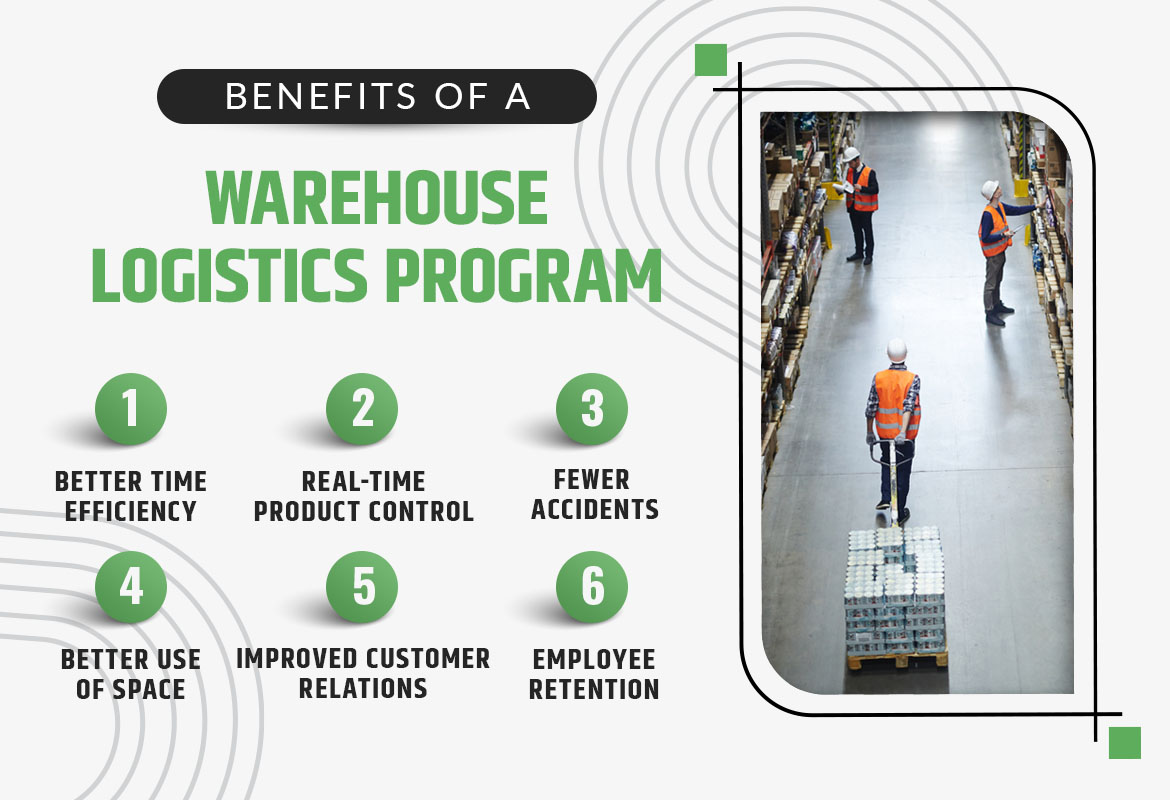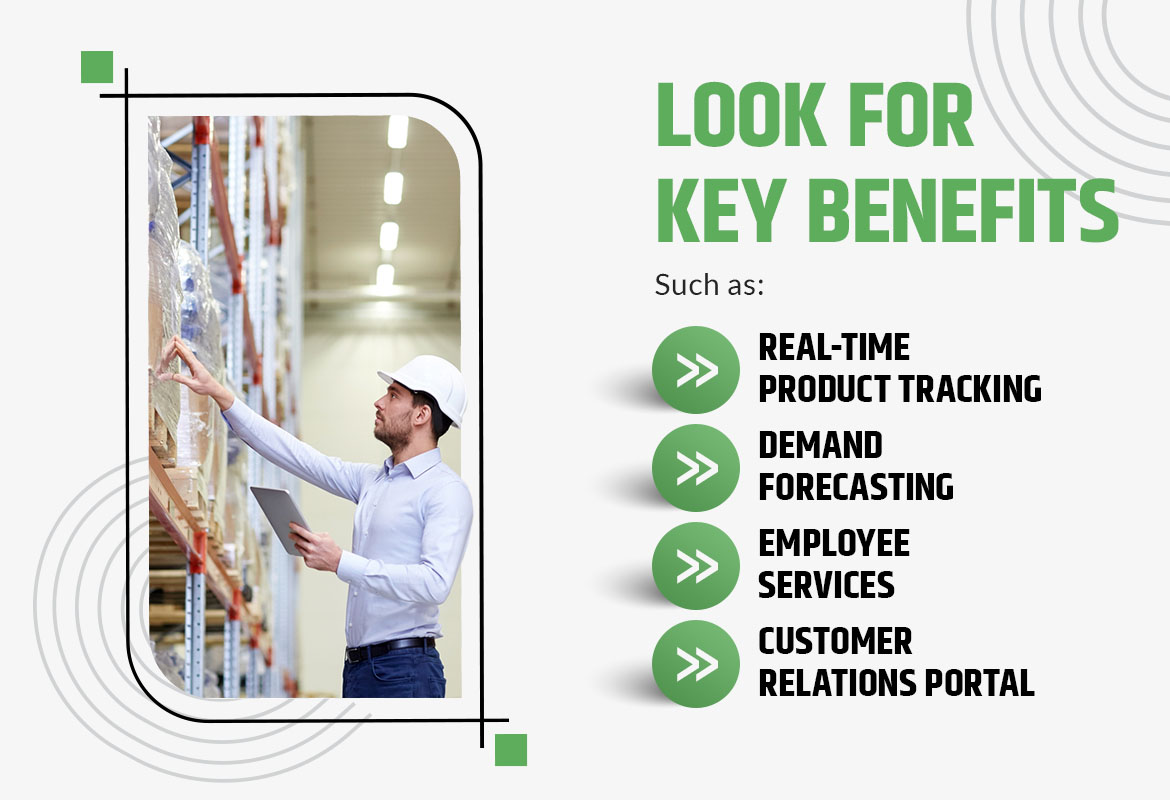Warehouses have become the backbone of the global economy. They move and store almost every kind of product on the planet, making sure these items arrive at their destination on time and unharmed. But running a warehouse is anything but easy. Studies show storage and distribution facilities are getting larger and more complex every year as companies look to automate certain aspects of the supply chain. Many facilities are expanding horizontally and vertically while taking on additional clients and SKUs.
The warehousing industry presents challenges on a variety of fronts. Storage rental rates are going up, and consumers want their products faster than ever before, usually within a few days or less. So, how do you make sure your warehouse is up to the task at hand?
Improving efficiency takes practice. It’s all about changing your approach to warehouse logistics, an essential component of any storage facility. Your company needs a plan for everything that occurs in or around your facility, including storage utilization, inventory management, shipping and delivery, labor management, customer service and pretty much anything else you can think of. Start fresh and use this guide to turn your company into a well-oiled machine.
Defining Warehouse Logistics
So, what is warehouse logistics anyway? It’s an umbrella term that refers to the day-to-day operations of your facility. Every component of your business falls into this category, including physical items like inventory, storage equipment, shipping containers, transportation vehicles as well as labor, time management, human resources, customer relations and technical support.
Logistics means having a plan for everything that occurs within your facility. You should be able to plan certain actions and tasks down to the exact minute, so you can make sure everyone is making the most of their time on the floor. This also helps you ensure your products get out the door on time.
You should also be able to expect the unexpected, including costly delays that can derail your business. Be prepared to respond to emergencies and accidents in real-time, such as a missing or delayed package, on-the-job injuries, customer complaints and other surprise issues as they arise. The goal is to resolve the issue as quickly as possible, so your business can get back to the task at hand.
Warehouse logistics can take many different forms. It may refer to an individual, such as the warehouse manager, and the system they use to keep everyone and everything in its place. However, times have changed since the 1980s.
Today, most facilities rely on what’s known as a warehouse management system (WMS), a software program that helps you track virtually everything that’s happening in your facility. The system will offer insights into your operations, providing clear metrics for everyday tasks, such as restocking shelves, fulfilling orders and delivering products.
Use an automated warehouse system to collect data on your operations. You can use this information to continuously improve your operations over time as your company evolves along with the rest of the industry.
What Are the Benefits?
Every facility needs some form of logistics to make sure things and people get where they’re going. There are many benefits to logistics but reaping the rewards all depends on which method you use. The more effort and resources you put toward logistics, the better off your facility will be.
The benefits of a having a warehouse logistics program include:
Better Time Efficiency
Your logistics program should help you and your team make the most of your time on the floor. Time is a precious commodity in the warehouse industry. Every second counts when your workers have thousands of orders to fill, which all need to go out for delivery by the end of the day. Tracking and recording tasks in the workplace can help you identify areas for improvement, so everyone works smarter, not harder.
Real-Time Product Control
Logistics also means always knowing the location of your inventory. You should have a near exact count of the number of products on the shelf, so you know when to reorder more inventory. It’s also best to track the location of your inventory in real-time as it makes its way to the destination.
Chances are your customers will want to keep tabs on the location of your products as well. Use logistics to keep an accurate count of your inventory, so you don’t have to cancel or delay an existing order. You can also share tracking information with your customers, so they know when their package will arrive.
Use Collapsible Bulk Containers to Better Optimize Warehouse Logistics
Improved Customer Relations
Your entire business depends on your customers, so do everything you can to keep them happy. Use logistics to anticipate their needs before they even place an order. Your WMS should help you predict future demand for your products, so you always have plenty in stock even when faced with seasonal demand. You may even be able to contact the customer without leaving your logistics program, so you can reference the order number in real-time.
Better Use of Space
With real estate rental rates on the rise, you need to do everything you can to reduce your use of space. Logistics can help you rearrange your inventory so that it doesn’t take up as much room. If you clear out extra space, consider renting it out to another company to save money on rent. If you need additional storage space, consider moving some of your inventory offsite.
Fewer Workplace Accidents
Logistics is also about workplace safety. The warehousing industry can be dangerous, especially when your workers are using equipment or handling goods in bulk. Falling goods and packages can lead to serious injury and even death. Use your WMS to track and analyze workplace accidents as they arise. Examine what led to the accident and look for ways to prevent it from happening in the future.
You can also use the system to spread out certain tasks, so that your workers aren’t retrieving goods at the same time. Give your workers enough time to complete their duties to reduce the risk of injury.
Employee Retention
You can also use the system to keep your workers happy so you don’t have to worry about hiring and training a replacement, as both can be expensive and time consuming. Giving your workers more time to complete tasks improves working conditions, so they don’t feel as rushed or stressed on the job. Look for ways to reduce the physical demands of the job by having a machine do the heavy lifting instead. With these changes in place, your workers will be more likely to stick around for the long haul.
How to Implement a Warehouse Logistics Program
You’ll need a few things to get your warehouse logistics program off the ground. Add these essentials to your checklist to get started:
Warehouse Management System
It all starts with finding the right WMS for your facility. Some programs are free, but they don’t offer the same features and benefits as the premium version. If you have a small facility without a lot of SKUs, you may not need a robust WMS. You should only pay for the features and services you need. Research these programs to make sure they will help you reach your goals. The software manufacturer should have a long history of helping companies in your industry succeed.
You should be able to examine every aspect of your facility using the same program. Look for key benefits, such as real-time product tracking, demand forecasting, employee services and a customer relations portal. If the program doesn’t offer the features you need, keep looking until you find one that does. The company should also offer stellar customer service, including technical support. There’s nothing worse than not being able to access your data.
Tracking your data in real-time may require a few changes to your operations. Your workers may have to get used to scanning barcodes on individual packages, so their movements get recorded in the system. This improves inventory tracking while reducing the chances for error, and it only takes a few seconds.
Storage and Inventory
You’ll need a series of storage containers to keep your products on the shelf. It’s always best to choose a container that brings you closer to your goals. You may not give a lot of thought to these containers, but they are a major component of your business. The container should keep your goods secure on the shelf without making it difficult for your workers to retrieve them.
Use bulk wire baskets to keep your inventory visible. They are the preferred choice when storing large consumer goods and spare parts. The item should be big enough that it won’t slip through the cracks. Your workers will be able to see into the container from several feet away, so they can identify the contents without opening the lid. This speeds up the order fulfillment process as your workers retrieve individual items before heading to the loading dock.
Smaller goods and supplies should be kept in bins and totes that fit close together, so they don’t take up as much room on the shelf. Use industrial metal storage bins to store metal screws, bolts, components, plugs and other items that can easily go missing.
Use plastic nesting totes for items that aren’t made of metal. The containers may even stack on top of each other, so you can fit dozens of items on the same shelf.
Bulk Wire Baskets Help Optimize Warehouse Logistics
Shipping and Order Fulfillment
Now it’s time to focus on shipping and what happens in the loading dock. Preparing packages for shipment can be time consuming if your workers have to do everything by hand. They can also make mistakes if they are filling multiple packages at once.
When sending out goods for delivery, use a collapsible bulk container to quickly move your goods from point A to B. Your team can fold up the container when it’s empty, which gives them more room to move around. Pulling out a collapsible container is much faster than building a cardboard box from scratch. It’s also more efficient.
Collapsing empty containers also reduces the chances of error by reducing confusion in the workplace. Set aside containers that aren’t being used, so your team can focus on the ones that are.
Consider Automation
The warehouse industry is embracing automation with open arms. You can use machines to increase efficiency at every turn, while reducing your dependence on human labor. Use conveyor belts to move products from one end of your facility to the other. Picking bots will retrieve items as soon as orders come in. They will then bring them to the loading dock in just a few minutes.
These robots can traverse all kinds of terrain while reaching the highest shelf. They use sensitive light-to-pick technology to handle your goods without damaging them in the process.
You can also use automation to fill, build and label packages before they go out for delivery. You will then have to maintain this equipment for years to come to prevent downtime. The initial cost to implement this technology can be intimidating for some, but it’s usually worth it in the long run.
Improving the Status Quo
Once you create a successful logistics program, it’s time to put your plan into action. Be sure to measure the success of these changes over time to make sure your company is moving in the right direction. These changes could yield massive rewards down the line, including reliable shipping services, on-time delivery and near perfect inventory accuracy, helping your company emerge as a leader in the warehousing industry. Keep this information in mind as you build a custom logistics system.
Image Credits
PopTika/Shutterstock.com
Amirul Syaidi/Shutterstock.com
Syda Productions/Shutterstock.com
dildilpa/Shutterstock.com
Pressmaster/Shutterstock.com
